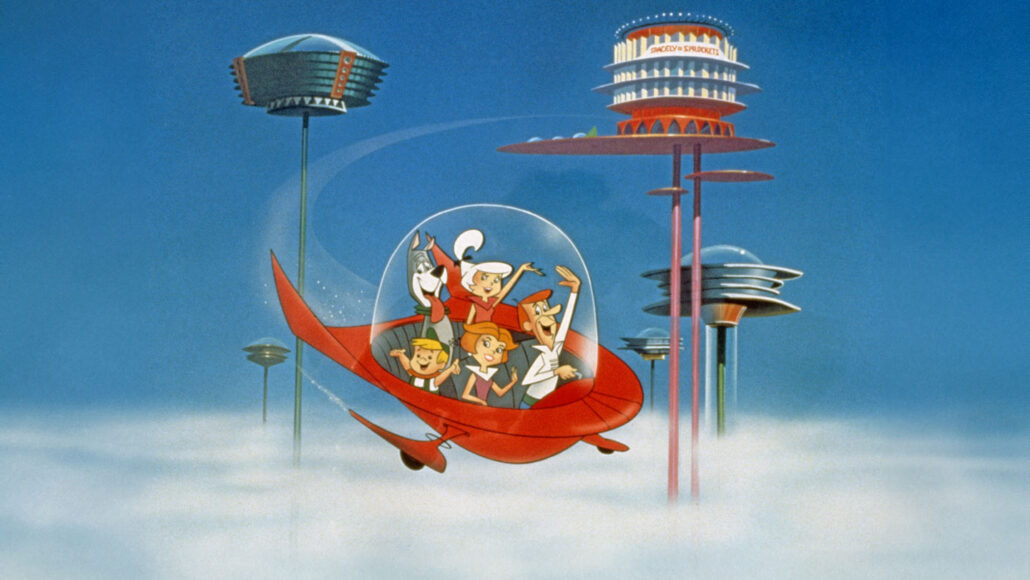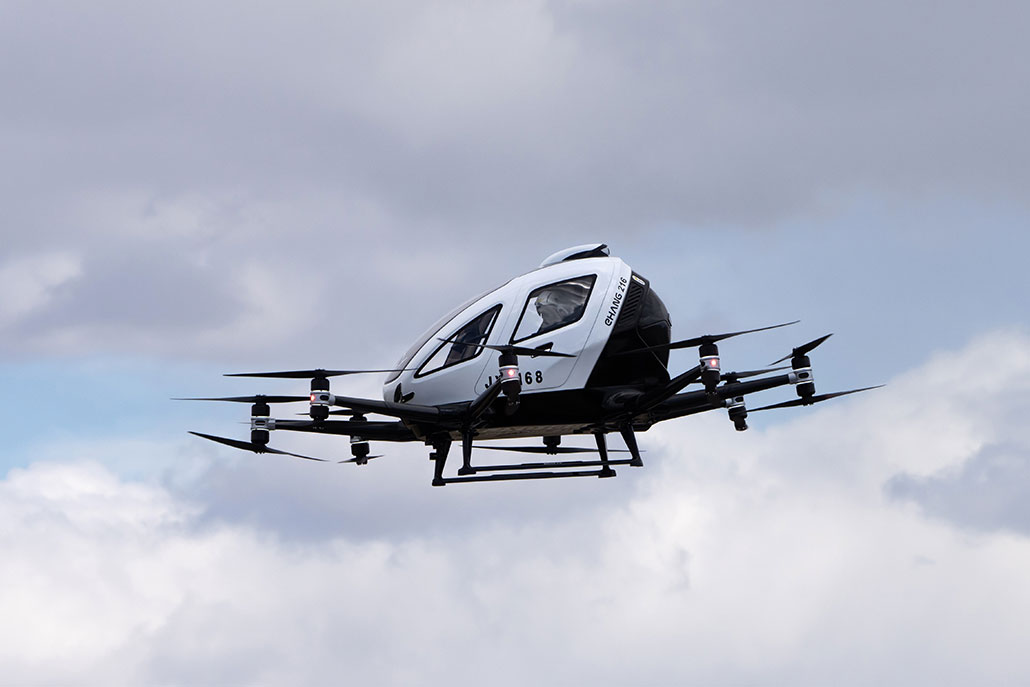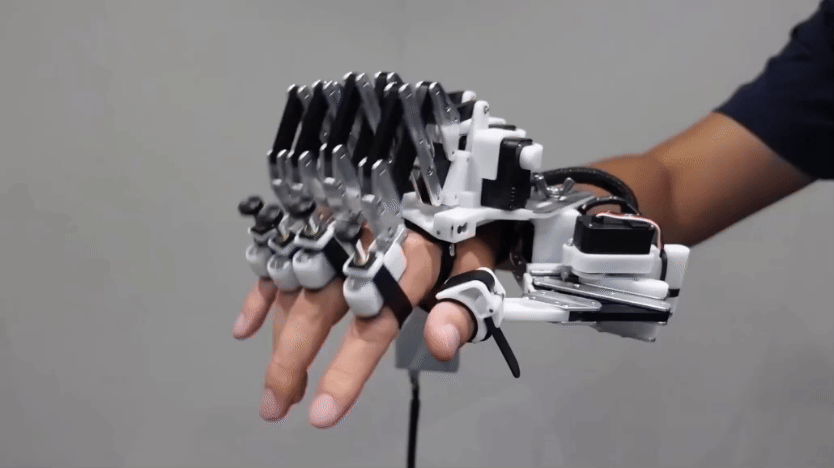Where are the flying cars?
Such airborne vehicles have been promised for decades — and may be closer than you think

People have been dreaming of flying cars for a long time. The Jetsons (shown), for instance, was a 1960s-era television cartoon show that depicted a family living in the future. Their flying car helped the Jetson family travel across Orbit City.
Warner Bros./Handout/Getty
Kids like Tola Martins in Disney’s Iwájú don’t drive to school, they fly. Harry Potter and Ron Weasley pulled a similar stunt when they missed the train to Hogwarts. As did Flint Lockwood when he had to stop a giant spaghetti storm in Cloudy with a Chance of Meatballs.
Flying cars have soared through sci-fi and fantasy stories since the early 1900s. But they’re not flying across our actual skies. At least, not yet. And if they do someday become commonplace, they might look a bit different than in the movies.

The technology to make flying cars already exists, says Xiaosong Du. He’s an aerospace engineer at Missouri University of Science and Technology in Rolla. Hundreds of companies, such as Terrafugia, are working to make flying cars a reality. Some have even flown prototypes, such as Joby Aviation’s air taxi and Airbus’ Vahana.
The key to making flying cars work is a combination of helicopter and airplane technology, Du says. It would not be very practical for flying cars to take off like airplanes. For that, they’d need runways, which would take up lots of space. Instead, a flying car would take off vertically, like a helicopter. Rotating blades would chop through the air, generating a force known as lift to bring the vehicle off the ground.
“Once it’s completed takeoff,” Du says, “you can fly like a normal airplane.” Airplane wings could rotate out from the body of the aircraft, allowing for flight with less air resistance than a helicopter experiences.
Another option is to attach propellers to a flying car’s wings. At first, the wings would be tilted upwards, so that the propellers could lift the vehicle. Then, once the car takes off, the wings would tilt to lay flat, like those on a normal airplane, says Pat Anderson. “It’s like a Transformer.” Anderson is the former director of the Eagle Flight Research Center at Embry-Riddle Aeronautical University in Daytona Beach, Fla.
Vehicles with rotating blades and propellers don’t sound much like the flying cars of science fiction. They don’t even sound much like cars. Instead, these vehicles would look more like the two-winged choppers that military personnel pilot around Pandora in the Avatar movies, Anderson says.
Still, building airborne cars is about more than just bringing sci-fi to life. It’s about using more of the available space in the world to get people where they need to go. Today’s drivers can only travel in two dimensions: north-south and east-west. Flying cars could unlock a third dimension: up-down. Imagine a world where you could beat rush-hour traffic by simply lifting off the ground and zooming over the other drivers.
This could be especially useful as the world’s population continues to grow. “I think that, eventually, we will see a day where we use the third dimension to help us get around,” Anderson says. “Otherwise, [Earth is] going to be a pretty congested place.”
What’s the holdup?
One of the biggest barriers to people commuting in flying cars is expense. The company Alef Aeronautics, for instance, plans to sell personal cars that can drive on roads and take off into the skies. These cars look and function similarly to those in many science fiction movies, but they come with a steep price tag. When they go into production as early as next year, the cars will likely cost around $300,000 each.
A handful of wealthy people may own cars like these, Anderson says. But most people could never afford one. Even repair costs would be much more expensive than for a normal car. “If you get in a fender bender, you just destroyed an airplane instead of a car,” Anderson says.
But average people may still ride in flying vehicles one day. Anderson imagines that a rideshare service for flying cars — something like Uber or Lyft for the skies — may be more practical than everyone owning one.
Even though some companies plan to release cars sooner, flying Ubers probably won’t be common for 10 or 20 years, Anderson says. First, aircraft need to be tested over and over for safety. And the U.S. Federal Aviation Administration will need to create regulations for flying cars. Rules of the road aren’t enough. Flying cars will need rules of the sky. “You don’t want airplanes falling on top of other people and hurting them,” Anderson says.
Du agrees that “reliability and safety are the key topics” now for making flying cars a reality.
Powering flying taxis is another holdup. Because of their sustainability, “people are kind of in love with batteries,” Anderson says. But batteries are heavy, and — like those in electric cars — have a limited range.
Flying takes a lot of power, especially during takeoff. Current rechargeable lithium-ion batteries can only support flying cars for 20 to 30 minutes, Du says. And while a car that runs out of charge can simply pull over, a flying car would fall out of the sky. So it’s extra important that these batteries last. That’s why researchers like Du are trying to improve battery efficiency before flying taxis hit the market.
After making sure they’re safe and energy-efficient, a big step would be to make flying cars self-driving. Even self-driving cars on the ground are still a rarity. But if self-piloting vehicles ever got off the ground, kids of the future might be able to skip a flying license test and head straight to the skies.
Do you have a science question? We can help!
Submit your question here, and we might answer it an upcoming issue of Science News Explores







